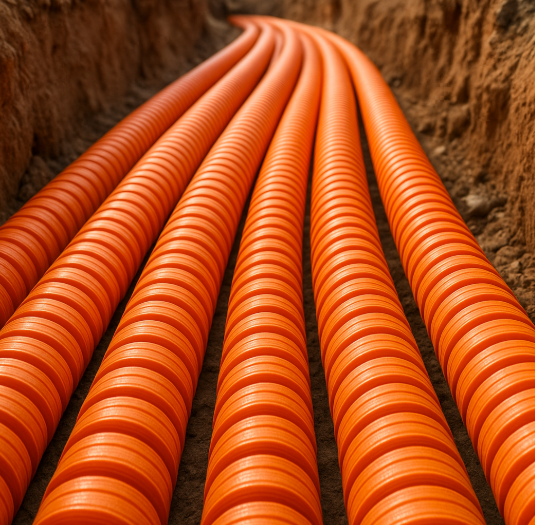The global shift toward fiber optic infrastructure represents one of the most significant technological upgrades in modern telecommunications. Cities worldwide are racing to replace legacy copper networks with fiber optic cables, and the results speak for themselves — internet speeds that were unimaginable just a decade ago are now becoming standard. This transformation affects everything from remote work capabilities to real-time applications like eg1xbet, where millisecond delays can determine the difference between a successful wager and a missed opportunity.
The Technical Foundation of Fiber Optic Superiority
Fiber optic cables transmit data using light pulses rather than electrical signals, creating a fundamental advantage over traditional copper infrastructure. Fiber optic installation techniques reveal the precise methods technicians use to maximize signal strength and minimize interference. The physics behind this technology is straightforward yet remarkable: light travels through glass fibers at approximately 200,000 kilometers per second, carrying exponentially more data than copper wires can handle.
From what I’ve observed in the field, the difference is night and day. Traditional copper networks struggle with signal degradation over distance — something that simply doesn’t happen with properly installed fiber. And here’s what makes this particularly interesting: the glass fibers themselves are thinner than human hair, yet they’re carrying thousands of times more information than thick copper cables.
Current fiber optic networks deliver several key advantages:
- Download speeds ranging from 100 Mbps to 10 Gbps for residential users
- Upload speeds matching download capabilities, supporting content creators and remote workers
- Latency reduction to under 5 milliseconds for local connections
- Signal stability that doesn’t degrade over distance like copper alternatives
- Future-proof infrastructure capable of handling emerging technologies
Real-World Performance During Peak Demand
Network performance during high-traffic periods tells the real story of fiber optic superiority. Network performance analysis studies demonstrate how fiber networks maintain consistent speeds even when entire neighborhoods stream simultaneously. I’ve witnessed this firsthand during major sporting events, where traditional networks often buckle under the collective weight of millions of users streaming, browsing, and participating in live betting platforms.
The difference becomes particularly pronounced during events like the World Cup or Super Bowl. Copper-based networks typically show 40-60% speed degradation during peak usage, while fiber networks maintain 95% of their rated capacity. This consistency matters enormously for time-sensitive applications — whether that’s a surgeon performing remote-assisted surgery or a bettor placing a last-second wager on a changing game situation.
But here’s where it gets interesting: the infrastructure demands aren’t just about raw speed anymore. Modern applications require consistent, predictable performance. A video call can tolerate brief slowdowns, but financial trading platforms can’t. Neither can live sports betting, where odds change by the second and network delays translate directly to lost opportunities.
Economic Impact and Implementation Challenges
The financial implications of fiber optic expansion extend far beyond faster Netflix streaming. Municipal governments investing in fiber infrastructure report significant economic benefits within 3-5 years of deployment. Property values in fiber-served areas increase by an average of 3.1%, according to recent real estate studies. Businesses relocate to areas with reliable high-speed internet, creating jobs and generating tax revenue.
But the implementation isn’t without challenges — and I mean serious ones. Installation costs average $1,000-$2,000 per household in urban areas, with rural installations costing significantly more. Many utility companies face the difficult decision of whether to upgrade existing infrastructure incrementally or invest in complete fiber replacement. The answer often depends on local geography, population density, and existing infrastructure conditions.
Nevertheless, the long-term benefits consistently outweigh initial costs. Fiber networks require less maintenance than copper systems, experience fewer weather-related outages, and can be upgraded through software rather than hardware replacement. This means that today’s fiber investment will support internet technologies that haven’t been invented yet.
What’s particularly fascinating is how this plays out in smaller communities. Rural areas that were historically underserved by traditional internet providers are now leapfrogging directly to fiber — skipping the intermediate technologies entirely. It’s like watching developing countries skip landline phones and go straight to cellular networks, but for internet infrastructure.
Future Applications and Bandwidth Requirements
Current fiber optic capabilities already exceed most users’ needs, but that won’t last long. Virtual and augmented reality applications require massive bandwidth and minimal latency. Smart city technologies — from traffic management systems to environmental monitoring — depend on reliable, high-speed connections. The Internet of Things continues expanding, with some experts predicting 50 billion connected devices by 2030.
Consider the bandwidth requirements for emerging technologies: 8K video streaming needs 50-100 Mbps per stream, while current 4K content requires just 25 Mbps. Multiplayer gaming with haptic feedback will demand consistent sub-millisecond latencies. Cloud computing applications are moving toward real-time processing, where any delay translates to reduced functionality.
The telecommunications industry recognizes these trends, with major providers committing billions to fiber expansion. Verizon, AT&T, and regional carriers are prioritizing fiber deployments over 5G tower construction in many markets. This shift reflects the understanding that fiber forms the backbone for all wireless technologies — even 5G towers require fiber connections to function effectively.
In my experience, we’re approaching a tipping point where fiber availability becomes a basic infrastructure requirement, like electricity or water. The question isn’t whether communities will get fiber — it’s how quickly they can implement it before falling behind economically.
Fiber optic expansion isn’t just about faster internet; it’s about creating the foundation for technologies we can’t yet imagine. As installation costs decrease and techniques improve, fiber networks will become as ubiquitous as electrical power — invisible infrastructure that powers our increasingly connected world.

